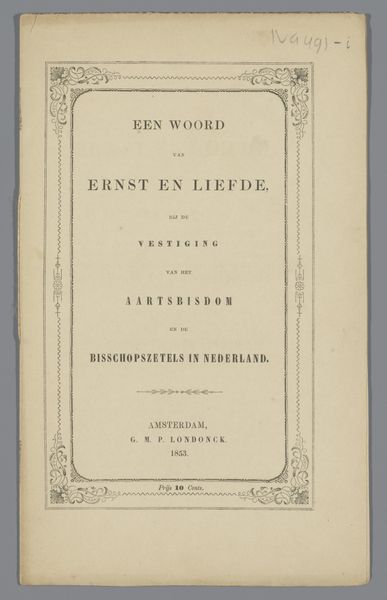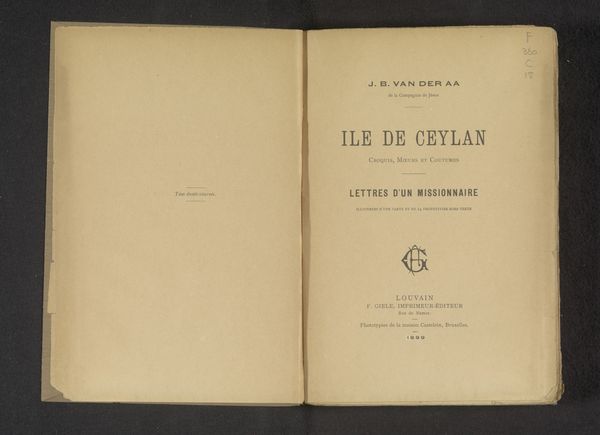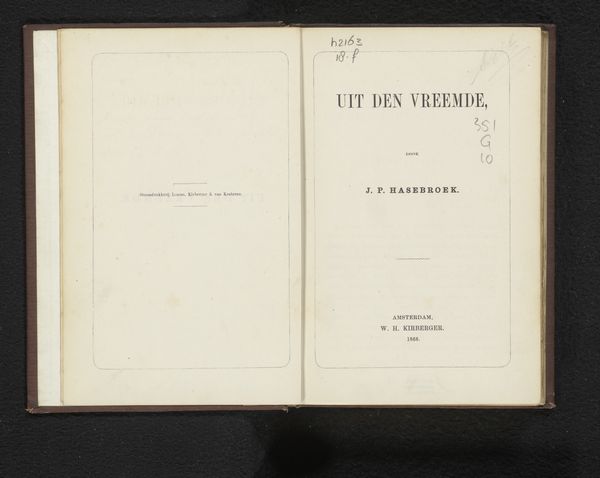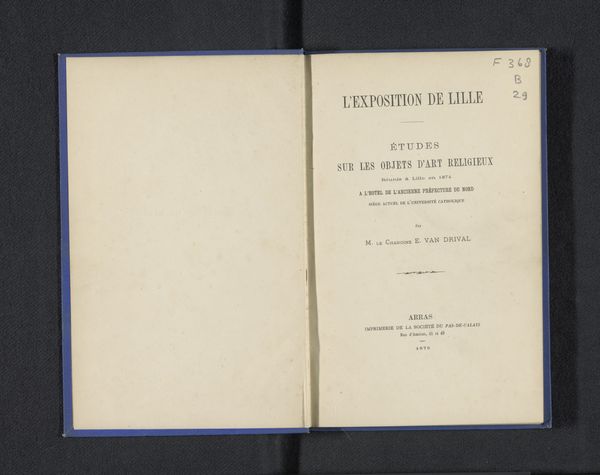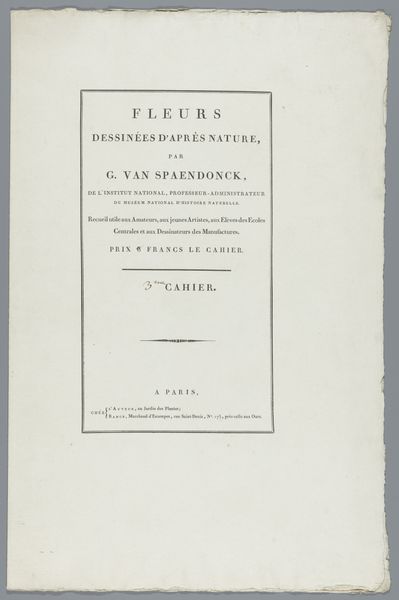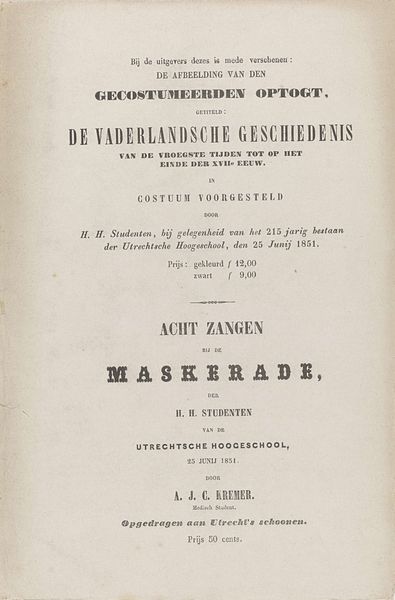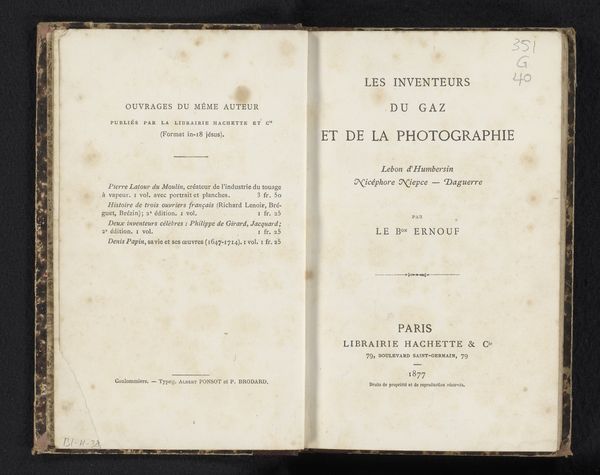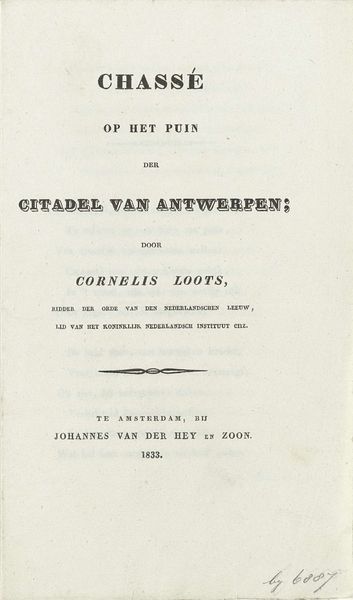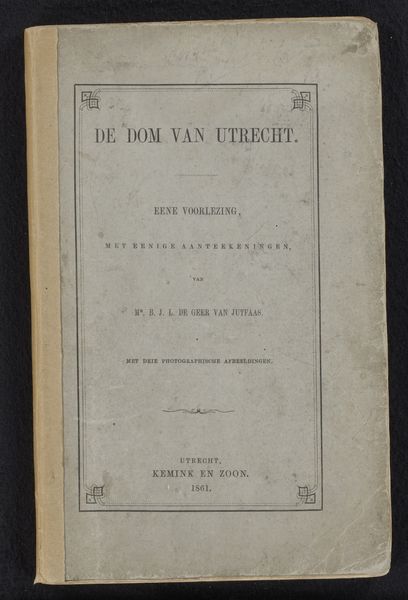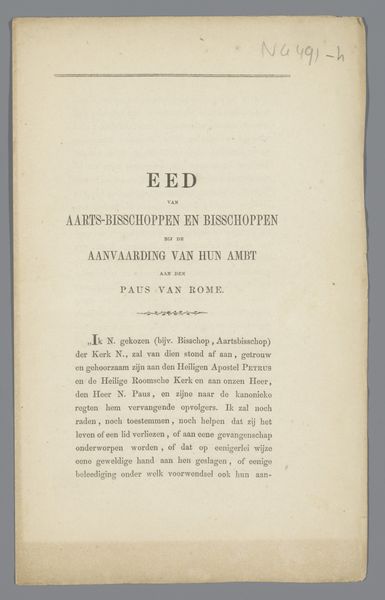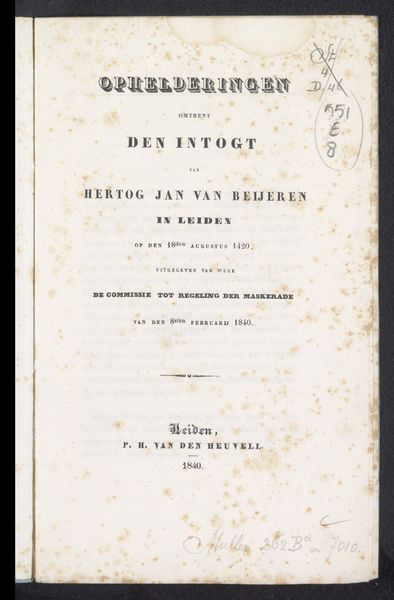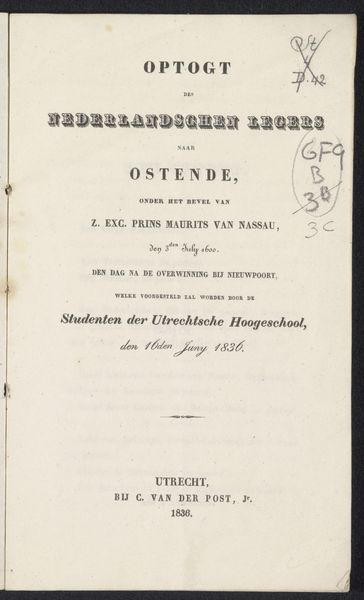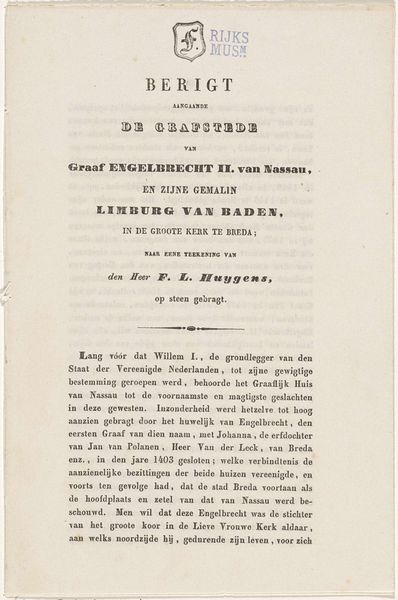
graphic-art, print, typography, poster
#
graphic-art
#
script typography
# print
#
typeface
#
hand drawn type
#
typography
#
typography
#
thick font
#
typography style
#
white font
#
experimental typography
#
classical type
#
poster
#
historical font
Dimensions: height 270 mm, width 190 mm
Copyright: Rijks Museum: Open Domain
Curator: Immediately, I notice how understated it feels. It's like a quiet announcement, a formal declaration made with such simplicity. Editor: The work before us, "Konings-Verjaardag: een lied voor den 19den februarij 1861", is a printed piece from 1861 created by J.H. van Lennep. It seems to be a poster or perhaps a title page. The emphasis on typography is striking, isn't it? Curator: Strikingly restrained, yes. The negative space almost swallows the text. It creates this… solemn reverence, befitting a king's birthday, I suppose, but with a touch of melancholy. Editor: The layout employs varying font sizes and weights to establish a visual hierarchy. Consider the bold san-serif typeface used for "KONINGS-VERJAARDAG", its cap height far exceeding the body text. It certainly catches the eye. Then, the slight embellishment dividing the text block…it’s all so intentional. Curator: Absolutely, every element works to construct meaning. It isn’t just information; it’s a constructed statement. And look, “(Uitgegeven ten bate van de watersnoodlijders)” is included below the author's name— "(Issued for the benefit of flood victims)", in English translation. Editor: Ah, interesting. Proceeds were going to charity! I appreciate knowing that about the artwork’s history because you look at it differently. It adds some much-needed context that explains a lot of that… restrained energy. Curator: Indeed. That sense of solemnity now becomes infused with a deeper purpose. It's no longer just about celebration; it’s about communal responsibility and compassion in the face of disaster. Editor: It's interesting how the artist merged both royal reverence and human tragedy. So perhaps there is less melancholic air about it and a bigger human feel of empathy that translates through time from 1861 into our present. Curator: The longer one looks at it, the more layers one uncovers. Thank you. Editor: Absolutely. It's like uncovering a forgotten melody of our past selves, and for me that’s the magical thing.
Comments
No comments
Be the first to comment and join the conversation on the ultimate creative platform.
